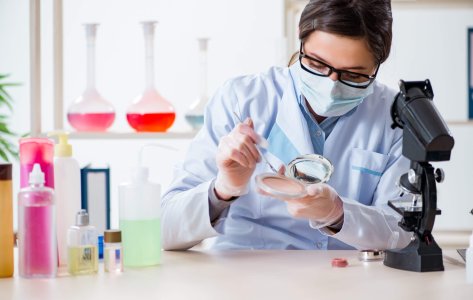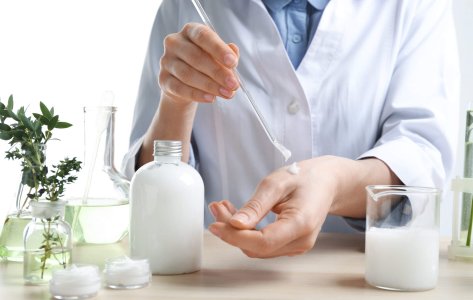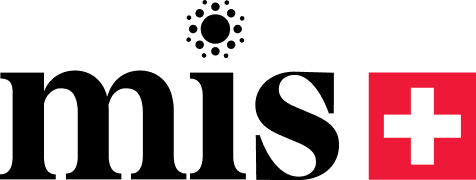- Swiss testing laboratory
BS EN 17387:2021

Hassle-free testing experience
Need to get a product tested? No worries! To and fro logistics are on us; we collect your products, test them and, deliver them back to you.
Related tests for you
Evaluating the bactericidal activity of chemical disinfectants and antiseptics used in the veterinary area
Evaluation of mycobactericidal or tuberculocidal activity of chemical disinfectants used for instruments in the medical area
Evaluation of mycobactericidal activity of chemical disinfectants in the medical area
Evaluation of bactericidal activity for instruments used in the medical area
Quantitative Surface Test for Antimicrobial Efficacy of Disinfectants on Hard Non-porous Surfaces
Evaluation of basic bactericidal activity of chemical disinfectants and antiseptics
Quick understanding of the test
BS EN 17387:2021 - Quantitative test for the evaluation of bactericidal and yeasticidal and/or fungicidal activity of chemical disinfectants in the medical area on non-porous surfaces without mechanical action (phase 2 step 2)
EN 17387 is a phase 2 step 2 test used to evaluate the bactericidal, yeasticidal, and fungicidal efficacy of chemical disinfectants used in medical areas on hard, non-porous surfaces without mechanical action.
Applicable to chemical surface disinfectant products used in the medical area.
- Staphylococcus aureus (ATCC 6538P)
- Enterococcus hirae (ATCC 10541)
- Pseudomonas aeruginosa (ATCC 15442)
- Candida albicans (MTCC 3017)
- Aspergillus niger (ATCC-16888)
- Ensures disinfectants effectively kill harmful pathogens, boosting safety in healthcare environments.
- Helps disinfectant manufacturers meet regulatory requirements for marketing and use in the medical sector.
Turnaround Time
- Bactericidal tests: 2–3 weeks.
- Yeasticidal/Fungicidal tests: 4–5 weeks.
Passing criteria
Do you have a product that needs testing?
Abstract
EN 17387 is a European standard that defines a quantitative laboratory test for assessing the antimicrobial efficacy of chemical disinfectants and antiseptics, specifically in the medical field. The method is designed to evaluate the bactericidal, yeasticidal, and fungicidal activity of disinfectant products on non-porous surfaces, such as stainless steel, under conditions that closely mimic real-life application, but without any mechanical action, like wiping or scrubbing.
Being a Phase 2 step 2 test, EN 17387 employs carrier surfaces to evaluate the product performance against targeted microbes, replicating more practical use conditions in healthcare settings.
Scope of products for testing
The standard is applicable in areas or situation where disinfection or antisepsis is medically indicated, such as –
- Hospitals, community medical centers, dental institutions.
- Clinics in schools, kindergartens, nursing homes.
- Other areas include laundries and kitchens supplying products directly for patients.
EN 17387 Test Conditions & Requirements
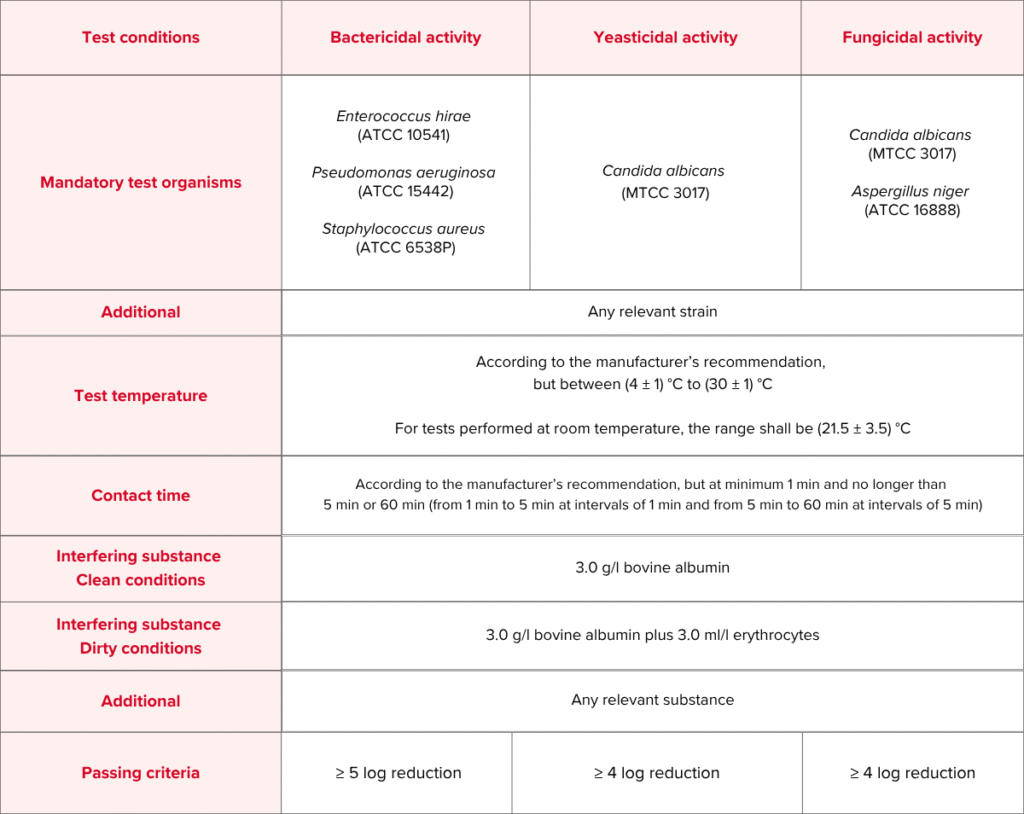
EN 17387 Test Method
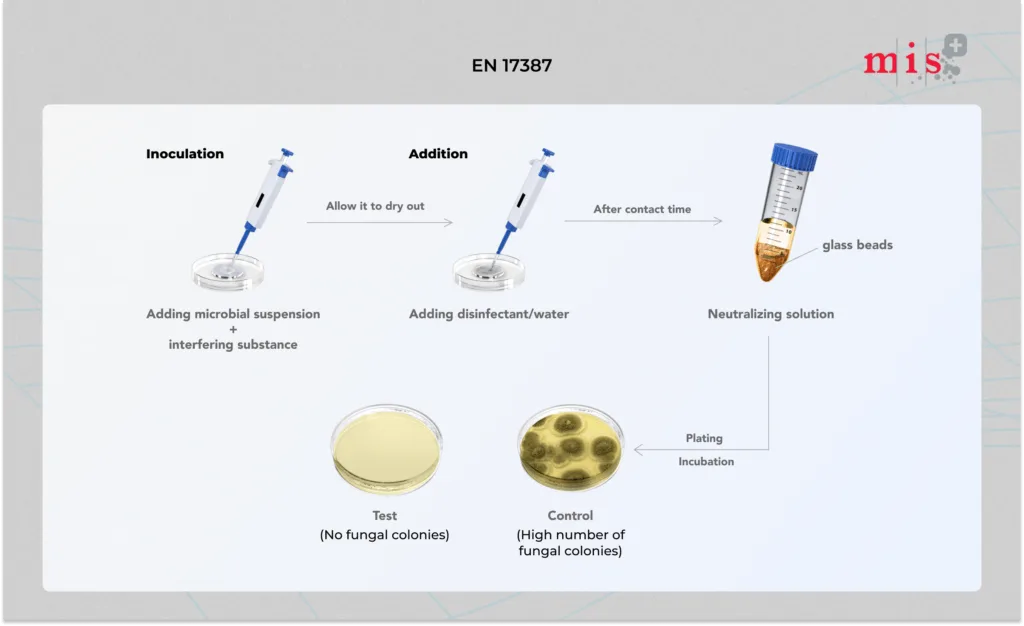
- A test suspension of microorganisms with interfering substances is inoculated onto a stainless steel surface and allowed to dry.
- The disinfectant product sample is applied thoroughly on dried microbial film. In parallel, a control test is run wherein hard water is applied to the stainless steel surface with dried inoculum.
- In the next step, the test surface is kept for specific contact times to allow the interaction between the test sample and challenge microorganisms.
- After contact time, the test surface is neutralized using a neutralizing solution to halt further activity of the product sample.
- Neutralizing extract is plated and incubated to check if any viable microorganisms are present. This is followed by enumeration of bacterial colonies on treated samples and control samples.
- To pass EN 17387 test, product samples must be able to achieve a 5-log reduction for bacteria and a 4-log reduction for fungi, respectively.
Importance of EN 17387 Test
The EN 17387 standard plays a vital role in evaluating the effectiveness of chemical disinfectants on non-porous surfaces in healthcare settings. It specifically assesses bactericidal, yeasticidal, and fungicidal activity in conditions that simulate real-world scenarios. As a Phase 2, Step 2 test, it closely mimics practical application parameters such as surface contamination, temperature, and contact time. This makes the results more relevant for real-life use, especially where mechanical action is not applied. It mandates rigorous efficacy testing for products used on frequently touched surfaces, supporting patient and staff safety. Ultimately, it helps manufacturers validate claims and comply with regulatory requirements for infection control.
Conclusion
At MIS, we help manufacturers validate their products to meet the highest regulatory and safety requirements.
Our labs are well-equipped with advanced technology and automated systems to assure accuracy and precision at each and every step of the analysis process. Furthermore, our microbiology experts provide all technical guidance on choosing the right standards based on disinfectant chemistry.
For surface disinfectant testing, we craft test protocols in adherence to different country standards including EN, AOAC, ASTM, and EPA.
Besides EN 17387, we also provide EN 1499, EN 16615, EN 14563 antimicrobial disinfectant testing services.
Frequently Asked Questions

DR. Martinoz Scholtz
EN 17387 is a phase 2 step 2 quantitative carrier test for bactericidal, yeasticidal and fungicidal disinfectants. This test is implied for chemical disinfectants used in medical areas/situations to destroy or kill pathogens on hard non – porous surfaces without mechanical action.
EN 17387 test is applicable for chemical surface disinfectant products which have microbicidal action against bacteria, viruses, and fungi. This includes conditions where disinfection is medically necessary such as hospital settings, dental institutions, schools, kindergartens, nursing homes, and laundries and kitchen areas providing services to patients.
EN 17387 test for bacteria typically takes 2-3 weeks to complete, whereas turnaround time for antiviral and antifungal samples is around 4-5 weeks.
At Microbe Investigations Switzerland, we test for EN 17387 using the following microbial strains: Staphylococcus aureus (ATCC 6538P), Enterococcus hirae (ATCC 10541), Pseudomonas aeruginosa (ATCC 15442), Aspergillus niger (ATCC-16888) and Candida albicans (MTCC 3017)
The test is conducted under clean (low contamination, 0.3 g/L bovine serum albumin) and dirty (high contamination, 3.0 g/L bovine serum albumin + 3.0 mL/L erythrocytes) conditions to simulate real-world scenarios.
Compliance with EN 17387 is essential for manufacturers involved in the development and manufacturing of chemical disinfectants intended for medical areas.
No, EN 17387 does not include antiviral testing.
Meet the best of the blend of
R&D, Efficacy Testing,
Innovation and Passionate
Experts at MIS.


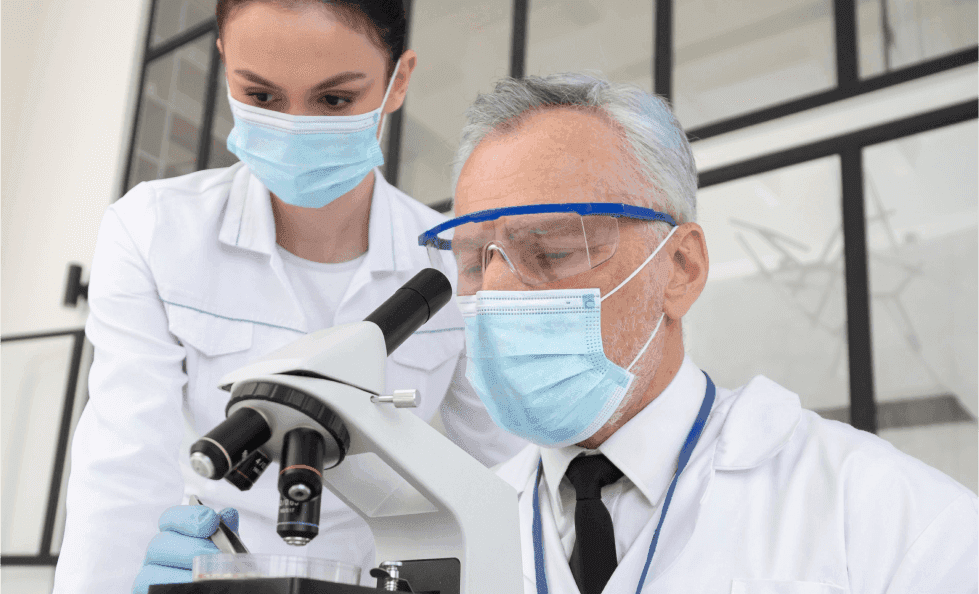
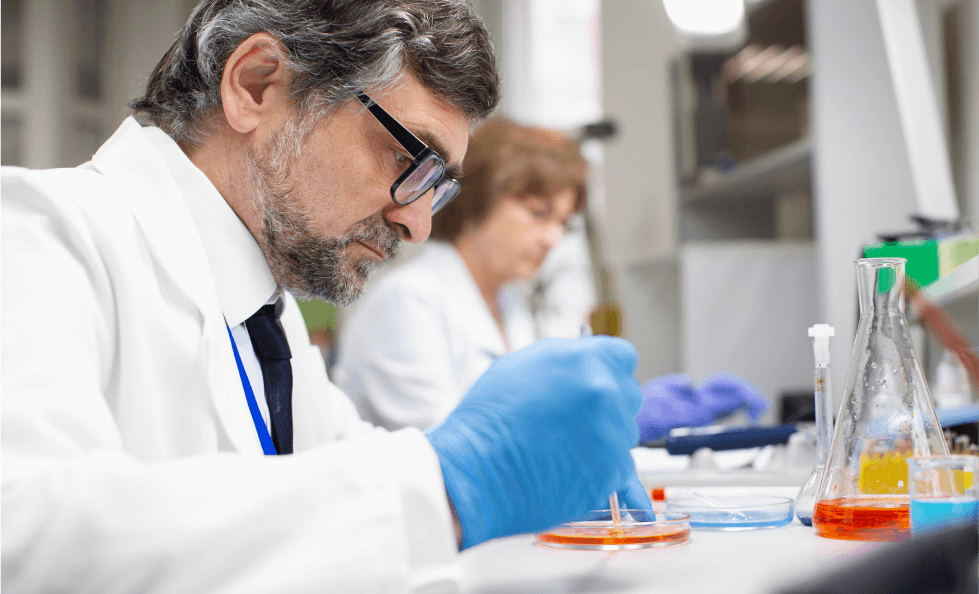
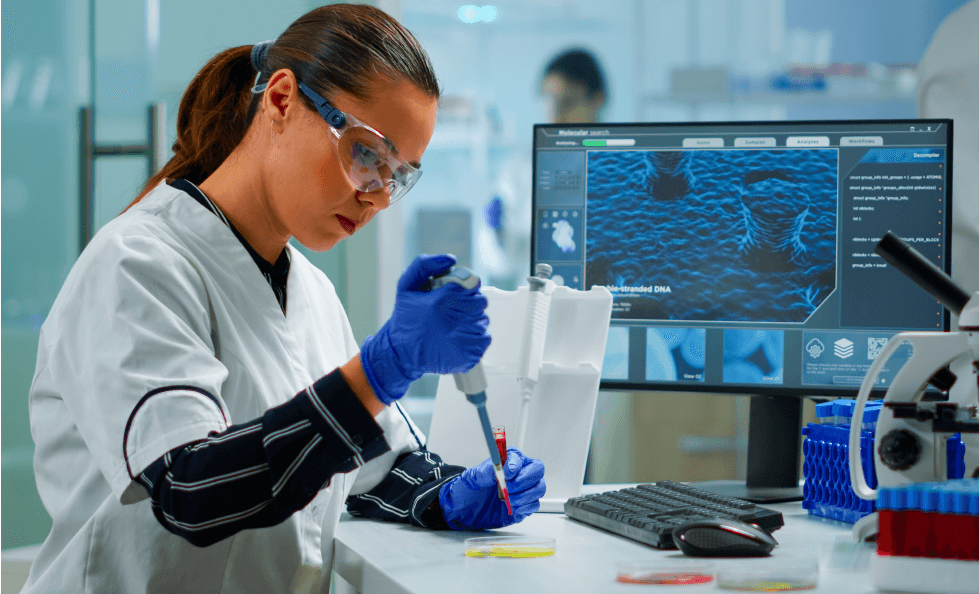
Explore More
In the cosmetics industry, safety
Evidently, with the expanding cosmetics
In the competitive world of

